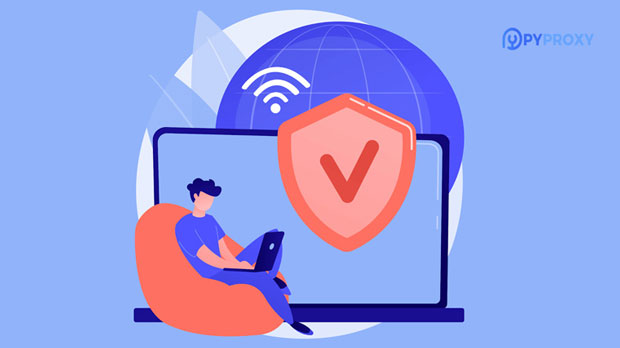Private static residential proxies are an essential tool for individuals and businesses looking to manage large-scale online operations with minimal risk of being blocked or detected. These proxies provide users with the ability to connect to the internet using real residential IP addresses, ensuring anonymity and flexibility. The pricing models for private static residential proxies can vary based on factors such as the volume of data, geographical location, and the level of security needed. In this article, we will dive into the various pricing models, their advantages, and how you can choose the most cost-effective solution tailored to your needs. Overview of Private Static residential proxy Pricing ModelsPrivate static residential proxies come with several pricing models, each designed to cater to different user needs. Understanding these models is crucial for selecting a service that offers the right balance between price and performance. 1. Pay-As-You-Go Pricing: This is a flexible model where customers are charged based on the amount of bandwidth or data used. It is ideal for occasional users or small businesses that do not require a constant flow of proxy traffic. The key benefit of this model is that users only pay for what they use, making it budget-friendly for users with low to moderate usage needs.2. Monthly Subscription: A fixed monthly subscription is the most common pricing model for private static residential proxies. Users pay a fixed fee regardless of how much data they consume within the month. This is beneficial for businesses with steady proxy usage, as it offers predictability in pricing. However, if usage is low, this model may not provide the best value.3. Tiered Pricing: Some providers offer tiered pricing, where the cost per unit of data decreases as the user consumes more bandwidth. This model benefits high-volume users who need proxies for large-scale data scraping, market research, or social media automation. The more data you need, the cheaper each additional GB of data becomes.4. Pay-Per-IP Model: In this model, the price is determined by the number of IP addresses allocated to the user. A higher number of IPs generally leads to a higher cost. This model is suitable for businesses that need to manage multiple accounts or perform operations from various geographical locations. 5. Geographically Targeted Pricing: Some providers charge differently based on the location of the proxy ips. For instance, IPs from countries with higher demand or stricter regulations may cost more. If you need proxies in specific regions for tasks such as localized SEO or market research, this model could work well, but it’s essential to keep location-specific pricing in mind when budgeting. Factors Affecting Private static residential proxy PricingWhile the pricing models offer a basic framework, several other factors influence the final price you will pay for private static residential proxies. Understanding these factors will help you make a more informed decision.1. IP Pool Size and Diversity: A larger pool of IP addresses, especially those spread across different locations, generally costs more. Providers offering a diverse set of IPs across multiple regions will typically charge higher rates. However, the diversity of IPs is critical if your operations demand geographical variety to avoid detection.2. Bandwidth Requirements: The amount of data that needs to be transmitted directly impacts the cost. Heavy data usage, such as for data scraping, streaming, or automated social media actions, will lead to higher pricing. If your operations involve frequent data transfers, look for plans with higher bandwidth limits or pay-per-use models for efficiency.3. Reliability and Speed: Premium providers often charge higher prices for faster and more reliable proxies. If performance is critical, especially for time-sensitive tasks, such as sneaker bots or ticket scalping, opt for providers that guarantee low latency and high uptime, even if the cost is higher. 4. Security Features: Proxies with additional security features, such as encrypted traffic, secure authentication, and anti-detection mechanisms, come with higher prices. For businesses involved in sensitive operations or those requiring extra layers of protection, the additional cost is often justified.5. Support and Service Level Agreements (SLAs): Providers that offer 24/7 customer support, dedicated account management, and strong SLAs often charge higher prices. However, for enterprises that rely on proxy services for mission-critical tasks, this can be an essential factor in ensuring smooth operations. How to Choose the Most Cost-Effective Private Static Residential Proxy SolutionChoosing the right private static residential proxy solution involves evaluating both the features and pricing models. Here are some practical steps to help you select a cost-effective plan that meets your needs:1. Assess Your Usage Needs: Start by determining how much bandwidth you need on a regular basis. If your usage is sporadic, a pay-as-you-go model could save you money. However, if you need consistent access, a monthly subscription might be more cost-effective in the long term.2. Consider Your Required IPs and Locations: If you need proxies from specific locations, check the pricing for those regions. Additionally, evaluate how many IPs you need. A pay-per-IP model could be beneficial if you need a large number of distinct IPs, but ensure that you only pay for what you need.3. Compare Performance and Speed: Speed and reliability are crucial when choosing a proxy service. Ensure the provider offers good uptime, fast response times, and minimal latency. Don’t compromise on performance for a cheaper price, as poor proxy performance can significantly affect your operations.4. Factor in Security Needs: If your business handles sensitive data, security features should be a priority. Ensure the proxy provider offers encryption, IP masking, and other privacy features. Though this might increase the price, it will protect your operations and data in the long run.5. Trial Period and Customer Reviews: Many providers offer trial periods that allow you to test the service before committing. Take advantage of these trials to assess the proxy performance, reliability, and ease of use. Also, check customer reviews and testimonials to gauge the quality of service provided.6. Check for Scalability: As your business grows, your proxy needs might evolve. Look for providers that offer flexible plans and allow you to scale your usage without incurring excessive costs. Scalable plans can help you avoid being locked into an expensive long-term contract that no longer fits your needs.Selecting the best value private static residential proxy solution requires a thorough understanding of your usage requirements, geographical needs, security concerns, and budget. By carefully evaluating different pricing models and considering the factors that affect pricing, you can find a service that meets your business goals while providing optimal cost-efficiency. Whether you’re using proxies for SEO, social media automation, or data scraping, the key is to balance performance, security, and price to achieve the best value for your investment.
Sep 09, 2025



































































